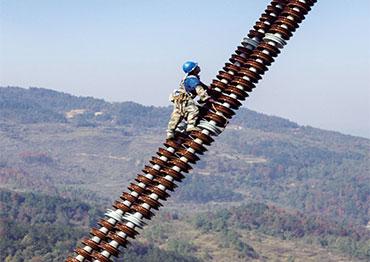Zhang Xiaojun, a deputy general manager at Hunan State Grid, speaking at an online meeting to combat electricity shortages in Hunan Province on December 12, said the province is most likely unable to generate electricity at full capacity at the current levels of installed capacity.
“By the end of 2019, Hunan’s installed capacity reached 466.9 million kilowatts, of which 51 percent was generated by non-fossil fuels. Over the past four years, only 8.21 million kilowatts were added to the general installed capacity in Hunan, up 4.7 percent year-on-year, far below the national average annual growth rate of 7.1 percent,” Ye Chun, deputy director of the Industrial Planning, Environment and Resources under the China Electricity Council, told NewsChina.
He said that for the additional 8.21 million kilowatts, hydroelectric power accounted for 16.85 percent, wind and solar power accounted for 82.15 percent, and coal accounted for only 1 percent.
Hunan’s plentiful water resources and hydroelectric stations are crucial to generating power in summer, with an installed capacity of 16.1 million kilowatts.
“Hunan is in the dry season now, so hydroelectric stations have a limited role in bolstering electricity generation,” Ye said.
According to a manager at a small hydroelectric station on a tributary of the Lishui River in Hunan, rainfall was abundant in November but by December, the hydroelectric station could not generate electricity. In January, he added, he could do nothing except repairs and maintenance.
“Small hydroelectric stations are heavily dependent on the weather. Power generation hinges on rainfall and mountain springs,” he told our reporter.
Wind and solar power generation saw rapid growth in Hunan in recent years, accounting for 16 percent of the total installed capacity in the province. When winter approaches, however, the supply of electricity from renewable sources is unstable. A professor at the College of Electrical and Information Engineering at Hunan University said the winter peak coincides with the worst time for wind and solar power generation. “The imbalance between supply and demand worsens in winter,” he told NewsChina on condition of anonymity.
In comparison, thermal power generation is relatively stable. “As of the end of 2019, thermal accounted for over 60 percent of power generation in Hunan. It is the main source of power despite its declining proportion in recent years. It secures baseload power,” Ye said.
In late 2019, two coal-fueled plants, Yueyang Power Station and Baoqing Power Station in Hunan, suspended operations due to a risk of failure after operating at maximum capacity for an extended period. This already cut electricity output by 1.02 million kilowatts. To make matters worse, Hunan State Grid disclosed that coal reserves in the province for electricity generation dropped by 18.5 percent year-on-year in late November.
The problem for Hunan is that more than 80 percent of thermal coal in Hunan is imported from other regions and provinces, including Shanxi, Shaanxi and Inner Mongolia. Each year, Hunan takes delivery of 60 to 70 million tons of coal from other provinces.

 Old Version
Old Version
